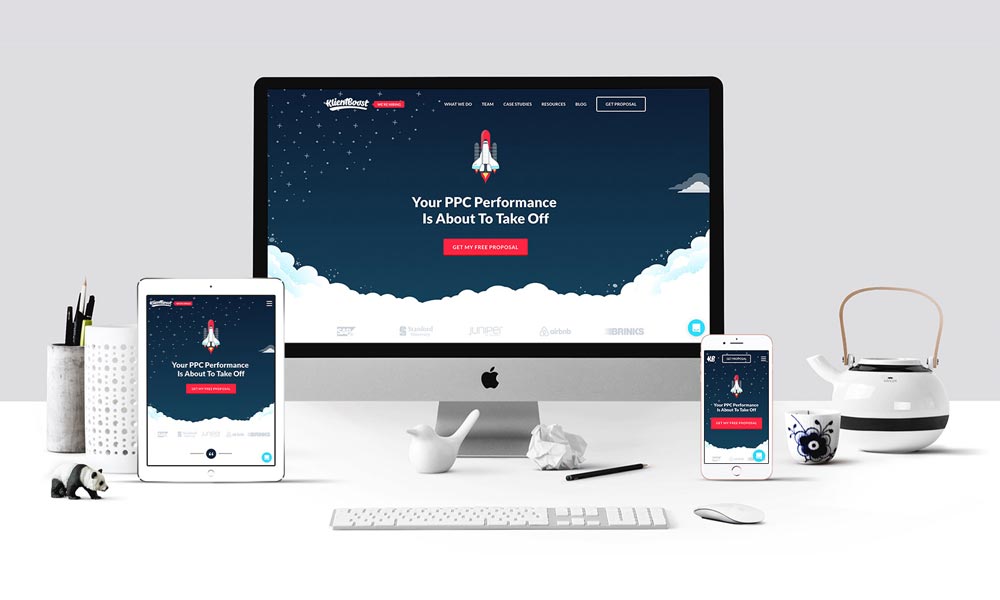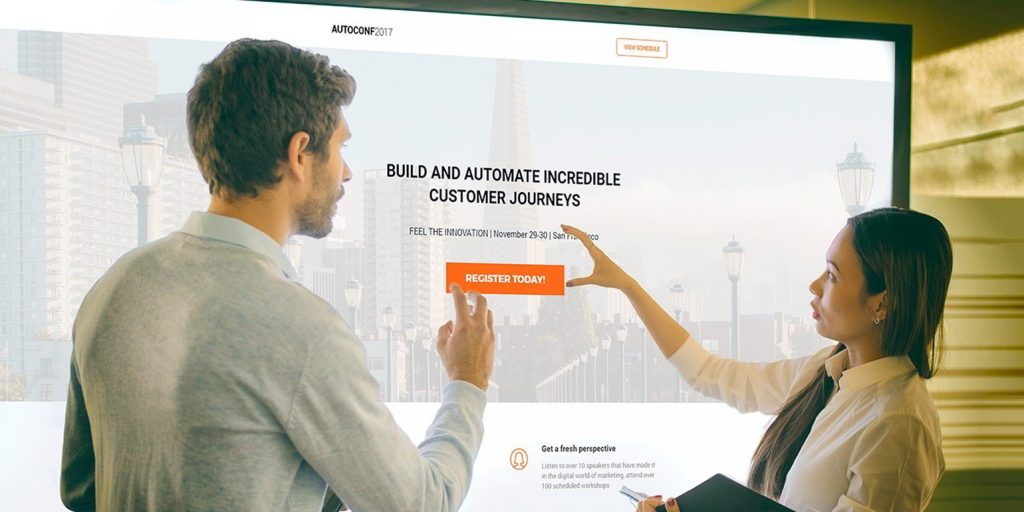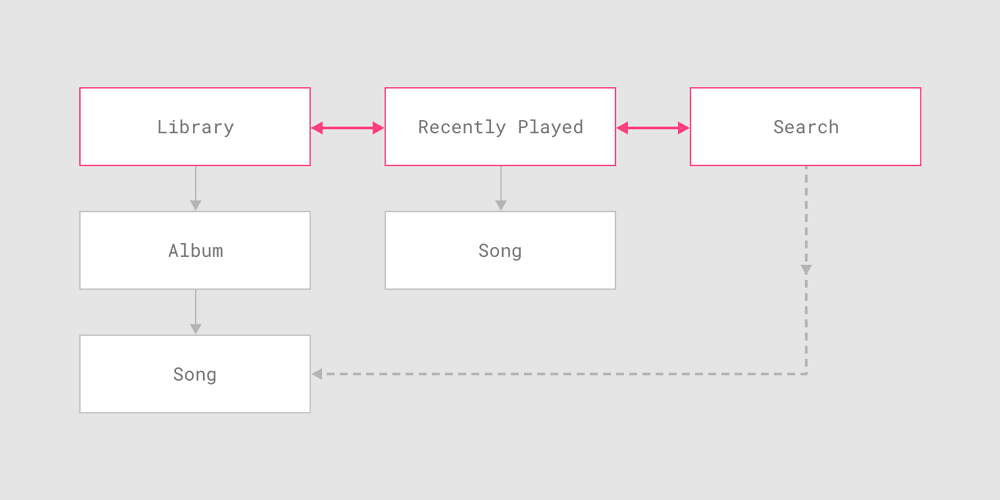ADA Compliance: Creating Inclusive and Accessible Websites
In an increasingly digital age, the concept of ‘access' takes on an added dimension. If the web is now considered our universal ‘public space,' then website design is akin to city planning. It's not just about aesthetics or usability; it's about inclusivity and accessibility, ensuring that everyone—irrespective of their physical or cognitive abilities—can access, navigate, and interact with the digital world. It's about creating online experiences that are genuinely ‘for all.'
Welcome to “ADA Compliance: Creating Inclusive and Accessible Websites,” where we delve into the intricacies of inclusive website design, discussing its importance and showcasing how it can be achieved.
To underscore the relevance of this topic, consider this: as of 2023, the World Health Organization estimated that over a billion people—or roughly 16% of the world's population—experience some form of disability. That's a significant portion of the global populace potentially finding hurdles where there should be none.
The Americans with Disabilities Act (ADA), a landmark civil rights legislation, helps mitigate these hurdles in the physical world. But did you know that it also applies to digital spaces? ADA compliance isn't just the law—it's a commitment to fairness and inclusivity that we all must shoulder.
This article is not just for designers or web developers; it's for everyone. Whether you're a business owner hoping to reach a wider audience, an educator striving for a more inclusive learning environment, or a digital citizen eager to understand more about the inclusive web, you'll find a wealth of knowledge here.
Let's explore the importance of designing with empathy and accessibility in mind and make our digital world a more inclusive space.
Table of Contents
Understanding ADA Compliance

Let's start by understanding what ADA compliance is all about. ADA stands for the Americans with Disabilities Act, a landmark legislation passed in 1990 to protect the rights of individuals with disabilities. The Act aims to eliminate discrimination and provide equal opportunities in various aspects of life, including employment, public accommodations, transportation, and more.
Regarding websites, ADA compliance extends these principles to the digital realm. It means that websites and other digital platforms should be designed and developed to enable individuals with disabilities to access and use them effectively. It's about creating an inclusive online environment that leaves no one behind.
The significance of ADA compliance cannot be overstated.
Creating accessible websites is not just about meeting legal requirements; it's about fostering inclusivity and ensuring everyone has equal access to information, services, and opportunities. By embracing ADA compliance, we can bridge the digital divide and empower individuals with disabilities to participate fully in the digital world.
Legal Aspects of ADA Compliance
Now, let's explore the legal aspects of ADA compliance and the implications for website owners. The legal framework surrounding ADA and website accessibility has evolved, with various court cases and regulations shaping the landscape.
One necessary legal requirement is compliance with the Web Content Accessibility Guidelines (WCAG) developed by the World Wide Web Consortium (W3C). WCAG provides technical guidelines for making websites accessible, covering content, navigation, design, multimedia, and more. These guidelines are widely accepted as the industry standard for web accessibility.
In addition to WCAG, there are other regulations and guidelines that website owners need to consider, such as Section 508 of the Rehabilitation Act in the United States. Section 508 requires federal agencies to make their electronic and information technology accessible to individuals with disabilities.
It's important to note that ADA compliance applies not only to government websites but also to private businesses and organisations that provide goods and services to the public. Non-compliance can have serious consequences, including legal actions and potential lawsuits. There has been a significant rise in ADA-related cases in recent years, with businesses facing financial penalties and reputational damage.
To ensure ADA compliance, website owners should conduct regular audits and assessments to identify accessibility barriers and make the necessary improvements. It's crucial to stay updated with the latest guidelines and regulations as accessibility standards evolve.
Best Practices for ADA Compliance
Now that we understand the significance and legal requirements of ADA compliance let's dive into some best practices for creating accessible websites.
Web Design and Development for Accessibility

When discussing creating an inclusive mindset during the design process, we're laying the groundwork for ADA compliance. It's not just about checking off a box or meeting a legal requirement; it's about genuinely considering the needs of individuals with disabilities right from the start. By incorporating accessible design principles into every stage of website development, we can ensure everyone can access and navigate our digital spaces regardless of their abilities.
Now, let's focus specifically on visually impaired users and the design considerations that can make a significant difference for them. Imagine trying to browse a website without being able to see it clearly or at all. It can be an incredibly frustrating experience. However, by implementing a few critical design practices, we can significantly improve the accessibility and user experience for visually impaired individuals.
One crucial aspect is providing clear and consistent headings. Well-structured headings allow screen readers to navigate through the content more efficiently, enabling users to understand the layout and organisation of the website. Using appropriate heading tags in the HTML code and ensuring they accurately represent the content hierarchy can make it easier for visually impaired users to locate and understand the needed information.
Another essential consideration is using alternative descriptive text for images, often called alt tags. Since visually impaired users cannot see the photos, it is vital to provide a concise and meaningful description that conveys the visual content's purpose or context. Screen readers read This description aloud, allowing visually impaired individuals to understand the images' significance within the overall scope. By including alt tags for all images, we can ensure that visually impaired user don't miss out on any essential information conveyed through visuals.
Additionally, paying attention to colour contrast is crucial. A significant difference between text and background colours enhances legibility for individuals with low vision or colour blindness. By selecting colours with sufficient contrast, we can ensure that all users can read and understand the content comfortably, regardless of visual acuity. It's essential to remember that contrast is not just about aesthetics but accessibility and inclusivity.
Implementing these design practices doesn't just benefit visually impaired users; they enhance the user experience for all individuals. Clear headings and well-structured content make navigating and comprehending information easier for everyone. Alt tags for images provide additional context that can benefit users with a slow internet connection or who choose to turn off photos for various reasons. And proper colour contrast improves readability for everyone, even those with perfect vision.
By considering the needs of visually impaired users and incorporating these accessible design principles, we can create websites compliant with ADA guidelines and truly inclusive and user-friendly for all individuals. It's about recognising and valuing diverse abilities and ensuring everyone can access and engage with digital content without barriers.
Content and Multimedia Accessibility

Accessibility is a crucial aspect of ADA compliance, and it plays a vital role in ensuring that everyone can access and understand digital content. One of the critical components of accessible content is proper formatting and structure. When text content is well-organised with headings and lists, it becomes much easier for individuals who rely on assistive technologies like screen readers to navigate through the information.
For instance, descriptive headings provide a clear hierarchy and help users quickly identify and jump to specific document sections. Lists, whether ordered or unordered, make it easier for individuals to understand the content in a structured manner. By structuring text content properly, we can ensure everyone can access information efficiently and effectively, regardless of their abilities.
In addition to text formatting, multimedia elements also need to be made accessible. Captions and transcripts are essential for videos and audio files, as they provide a text-based representation of the spoken content. This benefits individuals who are deaf or hard of hearing and those who cannot play audio at a given time. By including captions and transcripts, we can ensure that the information conveyed through multimedia is accessible to a broader audience.
Another critical aspect of content accessibility is using alternative text, also known as alt tags, for images. Alt tags are brief textual descriptions that provide visually impaired users with information about the content and purpose of an image. Screen readers read These descriptions aloud, allowing individuals who cannot see the picture to understand its context and meaning.
When writing alt text, it's essential to keep it concise yet descriptive. By using accurate and concise language, we can effectively convey the key elements of an image without overwhelming the user with unnecessary details. The alt text should accurately represent the image's content, ensuring that visually impaired individuals can form a mental picture based on the provided description.
Colour Contrast and Visual Design

When designing for individuals with visual impairments, such as colour blindness, paying attention to proper colour contrast is crucial. It's not just about aesthetics; it directly impacts the readability and legibility of text and other visual elements. Designers should go the extra mile to ensure that these elements stand out against the background colour, making them easier to perceive for everyone.
Think about it this way: imagine reading a book with pale yellow text on a white background. Sounds challenging, right? That's exactly how someone with visual impairments may perceive certain colour combinations. By selecting colours that provide sufficient contrast, designers can significantly improve the accessibility of their designs.
But colour contrast is just one piece of the puzzle when creating an accessible user interface. Visual design is significant in ensuring that individuals of all abilities can navigate and interact with a website effectively.
One crucial aspect of accessible design is using straightforward and intuitive navigation. People should be able to find their way around a website quickly and feel free of confusion. Clear and descriptive labels, logical grouping of links, and consistent placement of navigation elements all contribute to a more accessible user experience.
Consistency in design patterns is another crucial factor. By maintaining a uniform look and feel across different pages and sections of a website, designers can help users develop familiarity with the interface. This predictability allows individuals with visual impairments to navigate more efficiently, as they can rely on established patterns and structures.
Regarding accessibility, simplicity is often the name of the game. Avoiding complex layouts and excessive animations can go a long way in creating a user-friendly experience for everyone. While fancy transitions and flashy effects might seem appealing, they can cause distractions and hinder accessibility. It's essential to balance visual appeal and usability, ensuring the design is in the right place of functionality.
Keyboard Accessibility and Navigation

Keyboard accessibility ensures that individuals with motor disabilities, who cannot use a mouse or other pointing devices, can fully access and navigate websites. It's all about ensuring that every website's interactive element can be easily reached and activated using only the keyboard.
Think about it: if someone relies solely on a keyboard for navigating a website, it becomes crucial to design the site to accommodate their needs. This means paying close attention to elements such as links and form fields and ensuring they can be easily accessed and interacted with using keyboard input.
One crucial aspect of keyboard accessibility is providing clear focus indicators. These indicators help users identify which element on a webpage is currently selected or in focus. By having a clear visual distinction, users can navigate through the website confidently, knowing exactly where they are and where they can go next.
Another critical consideration is maintaining a logical tab order. When navigating a website using the keyboard, users rely on the tab key to move from one interactive element to another. By organising the tab order logically and intuitively, we can ensure users can navigate the website's content effortlessly.
Designing with keyboard accessibility in mind benefits not only individuals with motor disabilities but also others who may prefer or need to use the keyboard for various reasons. It's all about creating an inclusive and user-friendly experience for everyone.
Testing and Auditing for ADA Compliance
Testing and auditing are essential steps in the ADA compliance process. Automated testing tools can help identify common accessibility issues, such as missing alt tags, improper heading structure, or colour contrast problems.
However, it's important to note that automated tools cannot catch all accessibility barriers. Manual audits and usability testing involving individuals with disabilities are crucial for comprehensively assessing website accessibility.
Ongoing monitoring and maintenance are equally important. Websites are dynamic, with content and functionality constantly evolving. Regular accessibility checks and updates ensure the website complies with the latest guidelines and standards.
The Benefits of ADA Compliance
Beyond meeting legal requirements, ADA compliance brings numerous benefits to both website owners and users.
Improved User Experience for All

Creating an accessible website not only benefits individuals with disabilities but also enhances the user experience for all users. Following ADA compliance best practices makes websites more intuitive, easier to navigate, and offers a better overall user experience.
Consider a scenario where a website has clear headings, descriptive alt text for images, and well-structured content. These features benefit visually impaired users who rely on screen readers and users accessing the website on mobile devices or in environments with poor connectivity. ADA compliance leads to a better user experience across the board.
Legal Protection and Risk Mitigation
ADA compliance provides legal protection and helps mitigate the risk of potential lawsuits. With the rise in ADA-related litigation, businesses and organisations prioritising accessibility are less likely to face legal actions and financial penalties.
Moreover, ADA compliance positively influences brand reputation and public perception. Businesses can build trust, attract a broader customer base, and foster long-term loyalty by committing to inclusivity and equal access.
Expanding Reach and Market Potential
Creating an accessible website means tapping into the underserved market of individuals with disabilities. According to the World Bank, people with disabilities represent a significant consumer segment with a global estimated purchasing power of over $1 trillion.
By embracing ADA compliance, businesses can expand their reach and tap into this market potential. Moreover, inclusive practices attract new customers and foster customer loyalty and advocacy.
SEO Benefits of ADA Compliance
ADA compliance and search engine optimisation (SEO) go hand in hand. Many accessibility practices align with search engine algorithms and ranking factors. For instance, providing descriptive alt text for images not only improves accessibility but also helps search engines understand and index the content of the picture.
By incorporating ADA compliance into your SEO strategy, you can improve organic visibility, drive more targeted traffic to your website, and ultimately increase conversions and revenue.
Conclusion
In conclusion, it's crystal clear that ADA compliance is not just a legal requirement but a moral imperative and an opportunity for businesses to create truly inclusive and accessible websites. By embracing universal design principles, we can ensure everyone can navigate and engage with online content without barriers or discrimination, regardless of ability.
Creating an ADA-compliant website goes beyond checking boxes and ticking off a compliance checklist. It's about fostering empathy, understanding, and a genuine desire to make the digital world more inclusive. It's about recognising that people with disabilities have the same rights, desires, and aspirations as anyone else and deserve equal access to information, services, and opportunities.
By taking proactive steps to incorporate accessibility into the design process from the very beginning, we can save time, effort, and resources in the long run. Accessibility is not an afterthought or a quick fix; it's an integral part of the design process that enhances user experience. When prioritising accessibility, we enhance usability for people with disabilities and improve the overall user experience.
Moreover, let's remember the undeniable business benefits of ADA compliance. By making our websites accessible, we tap into a vast and underserved market segment, opening doors to new customers, increasing user engagement, and ultimately driving business growth. Accessibility is not just the right thing to do; it's also an intelligent business strategy that cultivates customer loyalty, trust, and goodwill.
So, let's join hands in creating a digital landscape that genuinely reflects our diverse society and values every individual's inherent worth and dignity. Let's break down the barriers that impede access and embrace the boundless possibilities of an inclusive and accessible web. Together, we can build a future where everyone can fully participate, connect, and thrive in the digital age.
Remember, accessibility is not a destination; it's an ongoing journey. Let's continue learning, adapting, and evolving our design practices to ensure we are at the forefront of accessibility standards. By doing so, we comply with the law and create a better and more equitable online experience. Let's make the web a place where everyone feels welcome, empowered, and included.
